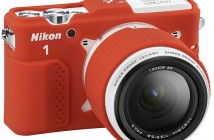
Fujifilm is pretty well known in the photography industry, and beside the professional dSLRs and premium line of digital cameras, they make some of the best semi-professional devices, which are pretty accessible as well and provide quite a lot of features for the price.
One of their latest products is the X-S1 – one of the best semi-professional cameras on the market, which aims to fully replace the need for a dSLR for amateurs and beginner photographers that fear they may need the advanced functionality in the future.
At a first glance, the Fujifilm X-S1 looks pretty much like every other camera with a fixed lens – it’s go the same overall design and size, with the only thing giving away its not-so-simple internal specs being the slightly bigger lens housing – it’s pretty hard to hide a 26x zoom monster , after all. The crazy zoom is the main differentiating feature for the camera, and it allows it to go up to f/2.8 maximum aperture, with a pretty wide range of 24-624mm – more than any other camera in the niche. The EXR sensor (the same one used in the premium X10 camera) is very high quality, and the user has more control over the end picture through the various manual functions that are available.
But the zoom alone won’t qualify this for a dSLR replacement – the lens construction itself, though, does – it is pretty much a marvel of engineering, using 17 glass elements (including 4 aspherical and 2 ED lenses) to deliver the most undistorted picture and as much light as possible directly to the 12 megapixels sensor, while the 9 blades of the lens aperture means that the camera can create a very nice bokeh effect, if you like that. The Supper Macro mode can take excellent shots of anything up to 1 cm close to the lens – that’s pretty much as close as you can get without using a microscope :-).
The X-S1 has a 3 inch, 460,000 pixels display on the back, along with a 0.47 EVF that has a whopping 1.44 million pixels – enough to make individual pixels indistinguishable. This means that you can take your shots in a variety of ways, depending on your style. The automatic mode is pretty much flawless at its job – it will select the best focus, aperture, and other settings for the current shot, but if you want to go manual, you have a wide array of settings to adjust, as well – pretty much everything you’ll find on a DSLR, you can find on the X-S1, except an ultra-long exposure like you’ll see on the most expensive SLRs.

Video capabilities aren’t missing either – you can shoot video in up to 1920×1080 resolution at 30 FPS, and thanks to the integrated dual microphone array, the sound is stereo and pretty high quality, as well. The camera supports SDXC cards, so you can shoot hundreds of pictures or hours of video on cards of up to 128 GB in size or more. The only drawback is the battery – it won’t last more than an hour of continuous video recording or about 300-400 photographs.
All of that versatility means that you can go a pretty long way without feeling the need for a new lens, which is the main reason people who bought a semi-professional camera switch to DSLRs early on – when you can do all that, you don’t need a dSLR, and that’s exactly what Fujifilm is marketing the X-S1 for.



